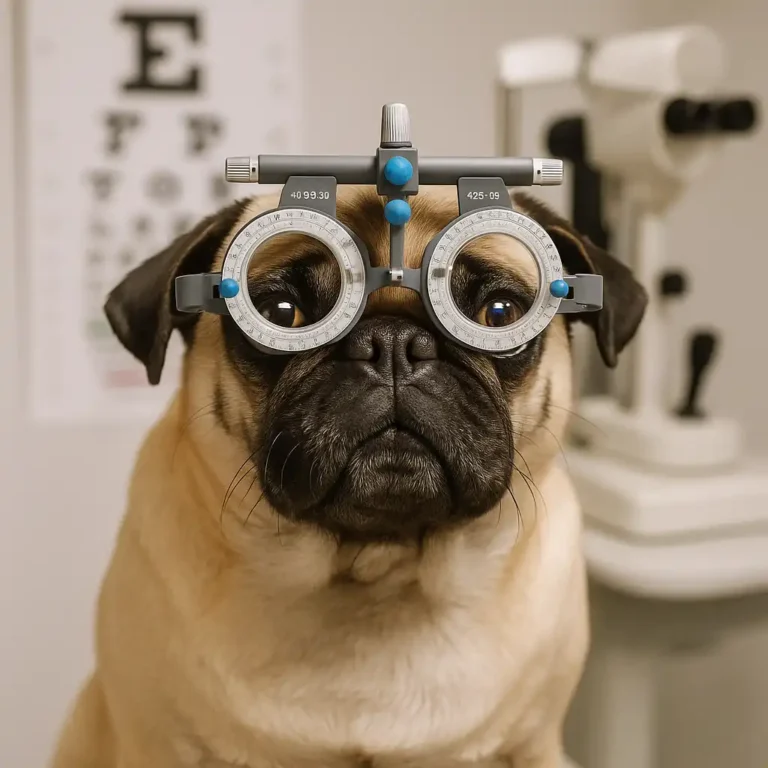Do Pugs Need a Coat for Winter Walks and Chilly Weather?

Disclosure: This post contains affiliate links. As an Amazon Associate, I earn from qualifying purchases—at no extra cost to you.
Pugs aren’t built for freezing temps. With their short fur, compact bodies, and sensitive breathing systems, they’re much more vulnerable to the cold than many other dog breeds. Even a short walk in brisk weather can leave a pug shivering and uncomfortable.
That’s why many pug owners choose to suit them up in a cozy coat once the colder months roll in. If you’re still learning the basics of year-round pug care, our guide on how to take care of a pug covers everything from seasonal needs to everyday routines.
Why Pugs Don’t Tolerate Cold Very Well
Pugs have thin, single-layer coats and relatively low body fat. They lose heat quickly, especially through their chest and paws. Their short noses also make it harder to warm cold air before it enters their lungs, which can lead to discomfort or even breathing strain in frigid conditions.
Veterinarians and experienced pug parents often mention how quickly these dogs react to cold weather. It’s common to see a pug shivering, lifting their paws off the icy ground, or trying to head back indoors within just a few minutes of being outside.
What Kind of Coat Works Best?
If your pug seems reluctant to go out in the cold—or shows signs of discomfort—a winter coat can make a big difference. The right coat helps maintain body warmth and makes walks more enjoyable.
Here’s what to look for:
- Insulated lining like fleece or quilted material
- Chest and belly coverage for full warmth
- Snug but not tight fit, especially around the chest
- Easy-to-use straps or Velcro
- A harness opening or leash hole
Water-resistant materials are great for wet or snowy days. Many pug owners recommend brands that accommodate broad-chested breeds, since pugs often don’t fit well into slim-cut styles.
Measuring before buying is key. A coat that fits too tightly can restrict movement, while one that’s too loose won’t trap heat effectively.
Indoor Comfort Still Matters
Even indoors, some pugs may feel chilly—especially older dogs or those with joint issues. Cold floors, drafty hallways, and long naps near windows can all make them uncomfortable.
To keep them warm and cozy at home, consider:
- Lightweight sweaters for indoor use
- Soft, layered bedding or blankets
- Heated pet beds or warming mats
- Blocking off drafty spots in colder rooms
Many pug owners notice that their dogs naturally gravitate toward heat sources—curling up near radiators or snoozing in sun patches whenever possible.
Signs Your Pug Might Be Too Cold
Watching your pug’s behavior during colder months can help you decide if a coat is necessary. Common signs of discomfort include:
- Shivering or trembling
- Lifting one or more paws while outside
- Curling tightly into a ball indoors
- Seeking out warm or covered spots
- Sudden sluggishness during walks
These signals often mean your pug needs more warmth—whether it’s a thicker bed, a heated mat, or a well-fitted coat for outside.
FAQs
Q: Do pugs need a coat for quick potty breaks in winter?
A: Yes, even short trips outside can expose pugs to harsh cold. A light, insulated coat can help prevent shivering and discomfort during quick bathroom breaks.
Q: How cold is too cold for a pug to go outside?
A: Anything below 45°F (7°C) can start to feel uncomfortable for many pugs. Once temperatures drop below freezing, it’s best to limit outdoor time and make sure they’re bundled up.
Q: Can pugs overheat in winter coats?
A: It’s possible—especially indoors or during active play. Only use coats outside and remove them once your pug is back inside and warm. Keep an eye out for panting or restlessness.
Q: Are sweaters better than coats for pugs indoors?
A: Sweaters are great for indoor use because they’re lighter and more breathable. For outdoor walks in colder weather, a thicker coat with insulation works better.
Conclusion
Most pugs need a coat for winter walks and outdoor time. Their small size, short coat, and sensitive respiratory system make it harder for them to stay warm when the temperature drops. A good coat can help them stay cozy, enjoy fresh air, and avoid cold-related health issues.
That said, every pug is different. Some may tolerate cool weather better than others, especially if they’re more active or younger. Keep an eye on how your pug responds and make adjustments based on their comfort level. When it comes to cold weather, it’s usually better to be cautious and keep them bundled up.






